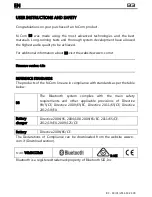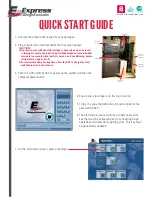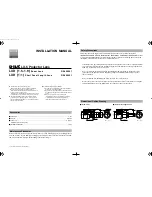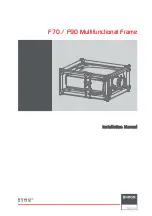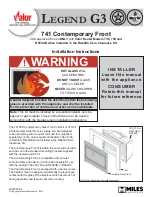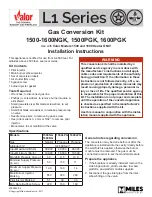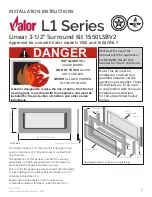
3
INSTALLATION GUIDE & OPERATION MANUAL | PART NO.
25484
REV
B
Make all electrical connections in compliance
with the National Electrical Code (NFPA 70)
and the local electrical code.
ABNORMAL ODOR OR SMOKE
In the event of smoke, a burning odor or
abnormal odor, immediately interrupt power
to the unit by unplugging the unit or by turning
off the circuit breaker protecting the unit
ELECTRICAL SHOCK / FIRE HAZARD
As a low voltage control the SNOW OWL has a
maximum current load of 2 amps resistive for
24 VAC and presents little hazard of electrical
shock or fire. The SNOW OWL is intended
to control higher voltage / current heating
circuits which can present such hazards so
care must be taken when using the sensor for
these applications. This product is intended for
residential or light commercial applications.
Any installation involving electric heaters must
be grounded to earth to protect against shock
and fire hazard. Use a suitably sized ground
fault detection and interruption system to
reduce shock and fire hazard and to protect
equipment. Wiring to heating elements must
be installed in accordance with the National
Electrical Code (NEC) requirements and all
other local and applicable electrical codes
and any third party standards. Follow the
installation instructions contained in this
manual and those provided by the heater
manufacturer.
Use a GFEP (Ground Fault Equipment
Protection) circuit breaker on each branch
circuit connected to the ice melting system.
Clearly label each circuit breaker with its
function. This is vitally important when there is
more than a single point of disconnect. Size
the circuit breaker in accordance with the size
of the maximum expected load.
Make certain that the heater shield is properly
grounded. Failure to do so may result in
electrical shock, damage to equipment or fire.
The Snow Owl performs an internal self test
when the power is first turned on. During the
first 10 seconds of power up the sensor will
turn on its output for a short time and engage
any contactor that is connected to it.
For this
reason care should be taken to ensure that
heater power is either connected properly or
that it is turned off/ disconnected before
powering up the sensor.
Following installation and prior to beginning
system operation refer to and perform the
post-installation tests described in this
manual.
THEORY OF OPERATION
The SNOW OWL sensor monitors atmospheric
conditions to determine when a snow/ freezing
rain event occurs and responds by providing
a grounded output to the control circuit or
contactor which in turn will enable the heating
system.
It does this by using the snowflake shaped
moisture sensor on the top cap to melt the
snow/ ice that lands on it and then detects the
resulting water using a low voltage current.
The detection of water alone will not provide
an output but is used in combination with a
temperature reading below 38
0
F. An Internal
processor looks for this combination or
moisture and temperature and triggers the
output only when both conditions are present.
This allows the SNOW OWL to trigger a heat
cycle only when it is needed. Once the SNOW
OWL has triggered it will remain on until
one or both of the stimuli is removed, and it
determines that the stimuli remains missing
for the next 4 minutes.
INSTALLATION INSTRUCTIONS
With user supplied hardware, mount the
SNOW OWL securely in an upright position
(sensor snowflake at top) in a clear and open
area typical of the area to be melted, either
above the roof line or removed from the
building in an area exposed to falling snow.
Avoid overhead trees, shrubs, wires, eaves,
etc., and falling or blowing debris.
Avoid vehicle and foot traffic. Avoid creating
a tripping or safety hazard.
Avoid exposure to artificial heat sources and
excessive shock and vibration.
Position the sensor at a height to reduce,
eliminate or discourage damage caused by
animals or vandals.
Install in accordance with the requirements of
all applicable electrical and building codes
and regulations. Ensure that all conduit and
cable terminations are watertight.
NEC Article 426.28 requires equipment
ground fault protection (GFEP) for ice and
snow melting equipment. This functionality is
not provided as part of this sensor and must
be provided as part of the overall system.
The SNOW OWL can be mounted at a distance
up to 500 feet away from the controller or
contactor using 22-gauge wires and up to
1000 feet using 18 gauge wires.
Once the SNOW OWL has been mounted in
the desired location it can be connected to the
controller or contactor.
•
•
•
•










